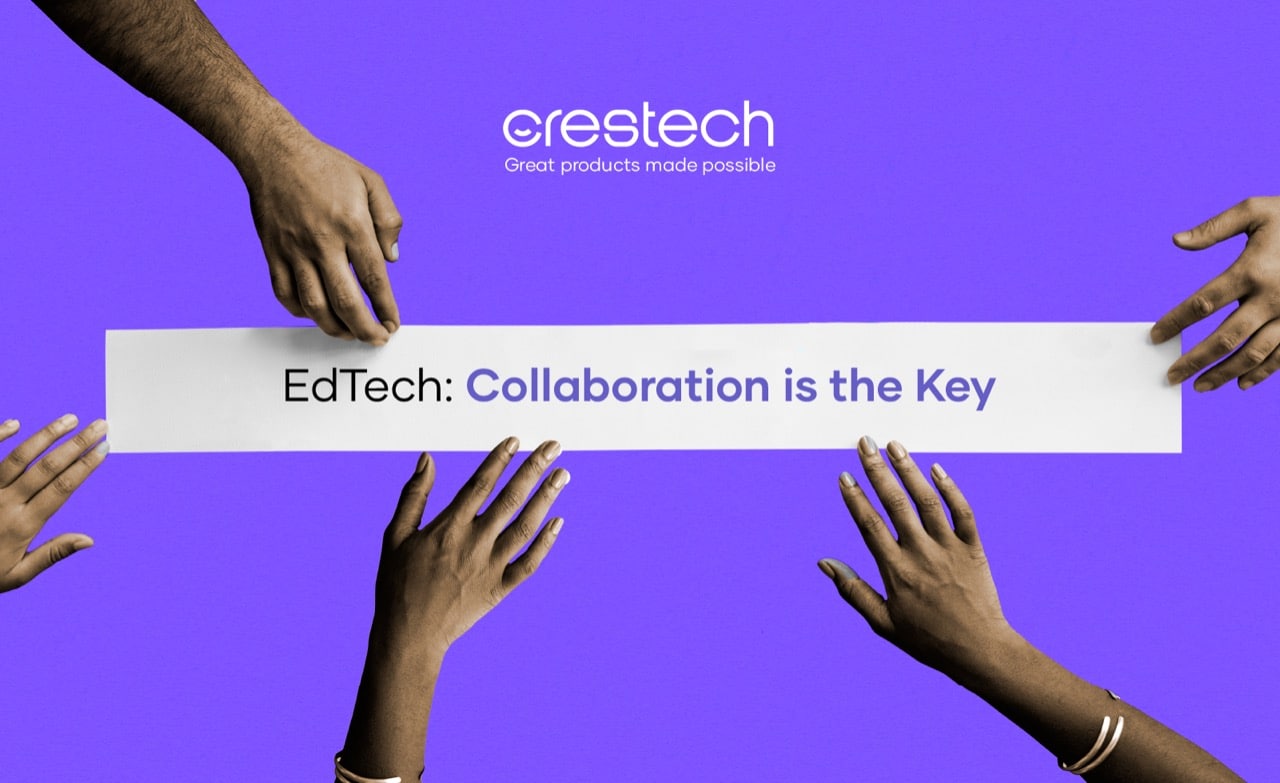- About EdTech
- Collaborate to bring efficiency
- Collaborative platforms
- Collaborate for Learning / Peer Learning
- Collaborate for building content / Co-authoring
- Collaborate Content and Actors
- Conclusion
About EdTech
Simply, EdTech is a combination of hardware, software and educational content to enhance, engage the learning of an individual. It is a practice of introducing digital tools into classrooms, home or anywhere to create a fun learning experience.
We all know that the pandemic has led to a drastic transformation across all sectors and industries globally, and most crucially Education. Over a period, classrooms have moved beyond books and pens to tech infused devices, interactive online courses or even a bot that can take notes and record lectures for students who can’t make it for their classes. We noticed that the need for technology in the education sector has never been more pronounced. Post Covid, EdTech will likely continue to remain relevant along with traditional ways of learning. EdTech highlights the importance of collaboration to learners and content creators. Working or learning together can make the process faster, easier and efficient. Let’s understand how.
Collaborate to bring efficiency:
“If you want to go fast, go alone. If you want to go far, go together”.
Collaborative learning describes a fun learning environment where a group of learners of mixed abilities interact with one another to complete a common task, which leads to achieving fruitful success. It is believed that educational experiences that are active, social, contextual, engaging and learner-owned lead to deeper learning. Similarly, the content creation can also be enriched with collaboration, bringing different dimensions from contributors. Let’s discover some of these platforms that can enable collaboration.
Collaborative platforms
Collaborative platforms have become a hot topic among modern business, colleges and universities as well as elementary schools. These platforms can increase team’s productivity as they allow them to share information, files, and documents and help them communicate faster.
During the pandemic many educational systems have realized the usefulness of remote learning. Collaboration platforms not only eradicate the need for physical meeting of students and teachers, they also improvise on the speed of content sharing and exchanging of ideas. Collaborative learning tools support the innate needs of students getting feedback regarding their progress and having their questions answered by their teachers or by their peers. Few examples of Collaboration tool that can help teachers and students interact efficiently are:
- Padlet
- Whiteboard
- MS word
- Skype
- Zoom
- GoSoapBox
- Piktochart
Learning or content development with peers will enhance the experience and content.
Collaborate for Learning / Peer Learning
Peer learning is a process where one learner engages with other learners to build an understanding on a content. Peer-to-peer learning is an effective method of knowledge transfer and a cost-effective method of training and development.
Similarly, during the content creation process, reviews done by the co-author or peers is termed as peer review. This has the power to add-up any missing dimensions in the content. The outcome of the peer review will be a better version, which can be understood better. All the above is possible if the collaborative platform has a concept of co-authoring in it.
Collaborate for building content / Co-authoring: When multiple authors can work or edit a single document and collaborate concurrently in real-time without interfering with each other’s changes, that’s called co-authoring. It removes barriers to server-based / version controlling collaboration. This feature helps schools, universities, and organizations to avoid unintentional multiple versions of documents by reducing the need to share attachments.
Collaborate Content and Actors:
For any EdTech it is important to have a content rich repository that can be organized into different segments. This categorization into segments increases the reusability of the content and helps in the upgradation of the content. Actors or users on the repository should be regulated so that any content mishandling can be prevented. Workflow can be defined for adding, updating, and deleting content from the repository that can pass through multiple levels, to avoid any misses or deliberate act of disruption.
Conclusion:
Aforesaid content describes most common enablers of EdTech, however there can be more based on the need of solution and audience. In the coming years collaborative learning and working will emerge as a distinct competitive advantage and skill. EdTech is going to play a major role to the masses and corporations by providing required information and collaboration. Businesses or schools that adapt these tools and techniques and actively work to uplift collaboration as an essential skill will be the leaders. Alone we can do so little, and together, we can do so much. – Hellen Keller


